There are two block as shown in the figure of masses 1kg and 4kg. Friction coefficient between any two surfaces are 0.2 then find maximum value of horizontal force F so that both blocks moves together.
_2019_CBT6_E01_036_Q01.png)
a. If both blocks move together, i,e no sliding between M and m, the friction between m and M will be static nature .Static friction force is a self - adjusting force 0≤f≤μsN .Acceleration of system in this case, a=F(M+m) ....(i)
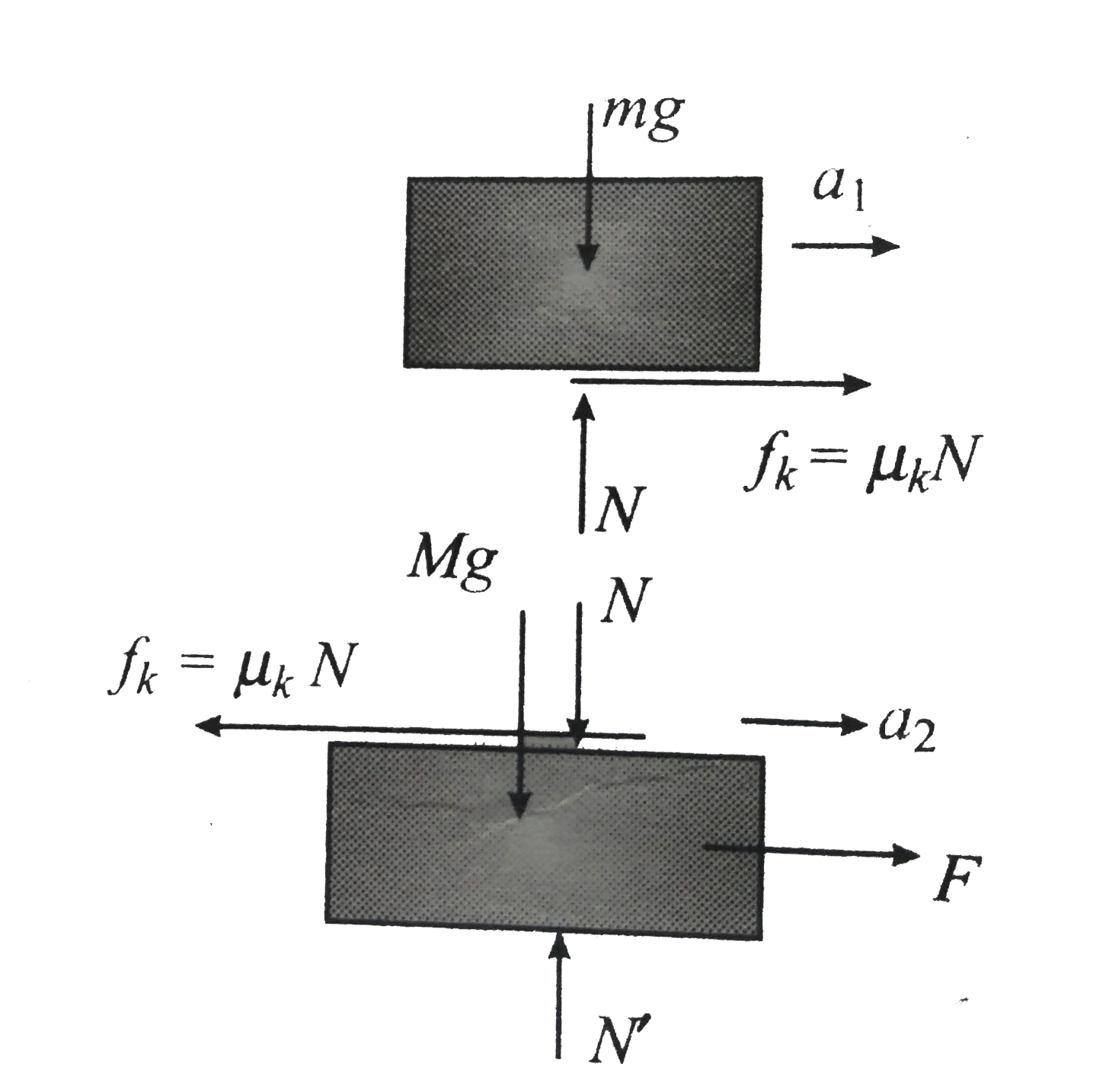
FBD of m and M
Equation of motion of m
f=ma=mF(M+m) ...(ii)
If there is no sliding between M and m , then f≤fs−max
⇒mF(M+m)≤μs(mg)
⇒F≤μs(m)g
b. If F>μs(M+m)g, then there will be relative sliding between M and m . when relative sliding between M and m static
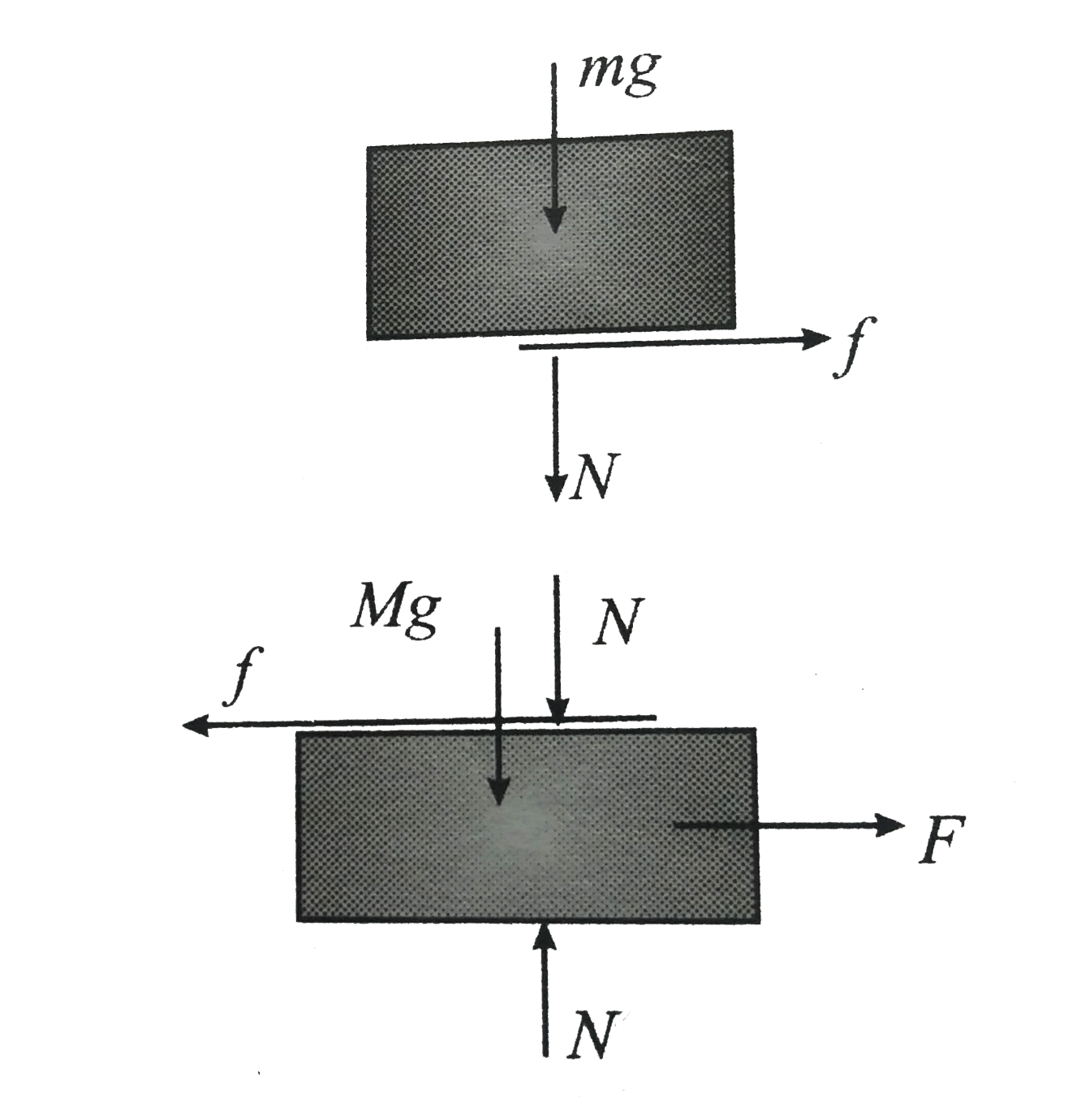
The friction force reaches limiting value the friction for because fk=μkN
Free - body diagrams of m and M .
Equation of motion of m:μk(mg)=ma1
Acceleration of m,a1=μkg
Equation of motion of M:F−μkmg=Ma2
Acceleration of M,a2=F−μkmgM
Topper's Solved these Questions
- BOOK - CENGAGE PHYSICSCHAPTER - NEWTON'S LAWS OF MOTION 2EXERCISE - Solved Examples12videos
NEWTON'S LAWS OF MOTION 2
- BOOK - CENGAGE PHYSICSCHAPTER - NEWTON'S LAWS OF MOTION 2EXERCISE - Exercise 7.125videos
NEWTON'S LAWS OF MOTION 2
- BOOK - CENGAGE PHYSICSCHAPTER - NEWTON'S LAWS OF MOTION 1EXERCISE - Integer5videos
NEWTON'S LAWS OF MOTION 1
- BOOK - CENGAGE PHYSICSCHAPTER - PROPERTIES OF SOLIDS AND FLUIDSEXERCISE - INTEGER_TYPE2videos
PROPERTIES OF SOLIDS AND FLUIDS
Similar Questions
A bar of mass m is placed on a triangular block of mass M as shown in figure The friction coefficient between the two surface is μ and ground is smooth find the minimum and maximum horizontal force F required to be applied on block so that the bar will not slip on the inclined surface of block
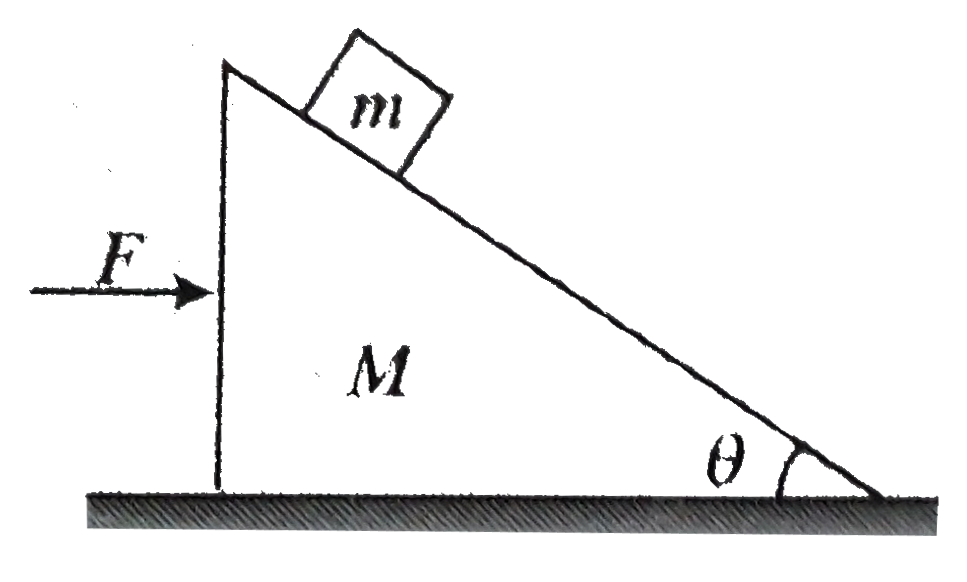 View Solution
View SolutionConsider the situation shown in the figure . The coefficient of friction between the blocks is μ. Find the minimum and the maximum force F that can be applied so that two blocks move together.
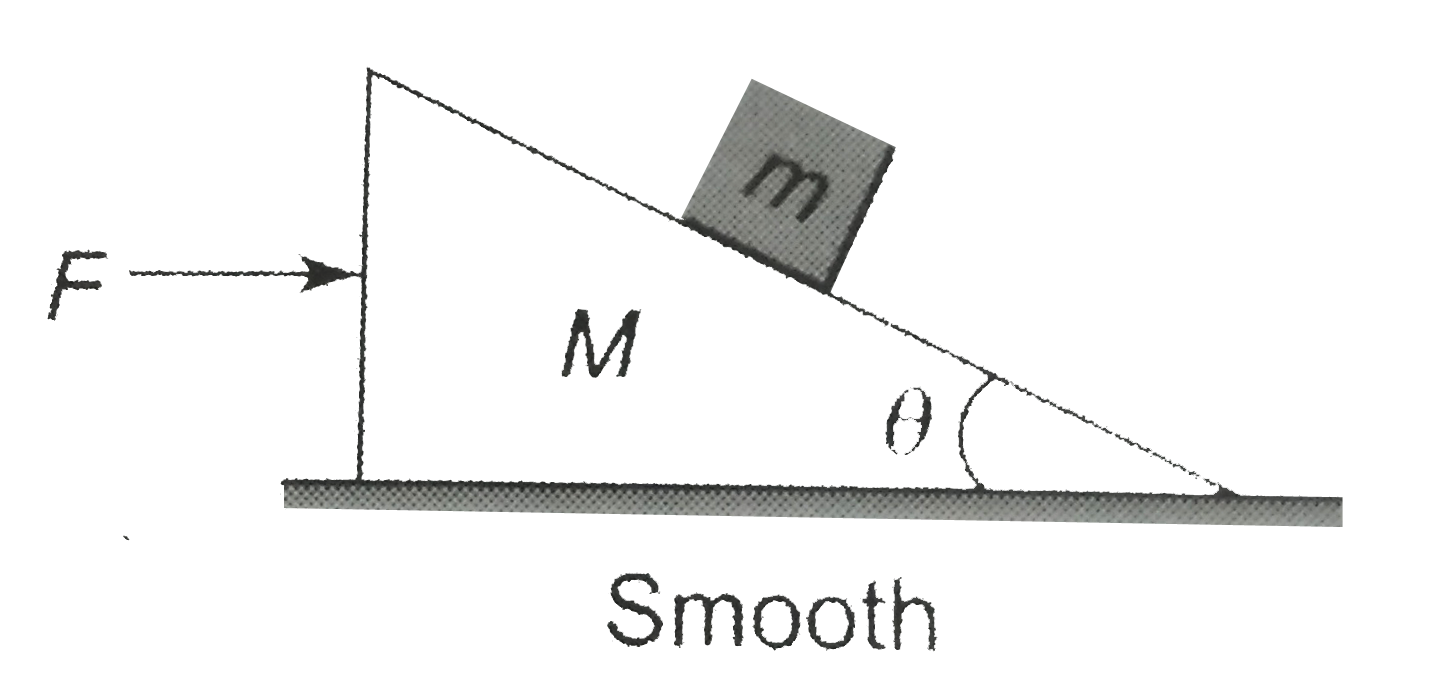 View Solution
View Solution
Knowledge Check
- Question 1 - Select One
A system of two blocks is shown in figure. Friction coefficient between 5 kg and 10 kg block is μ=0.6 and between 10 kg and ground is μ=0.4 What will be the maximum value of force F applied at the lower block so that 5 kg block does not slip w.r.t. 10 kg . (g=10m/sec2). The force applied at the upper block is having fixed magnitude of 80 N (both forces start to act simultaneously)
 A160 NB250 NC210 ND310 N
A160 NB250 NC210 ND310 N - Question 2 - Select One or More
A block is kept on a rough horizontal surface as shown. Its mass is 2 kg and coefficient of friction between block and surface (μ)=0.5. A horizontal force F is acting on the block. When
 AF = 4 N, acceleration is zero.BF = 4 N, friction is 10 N and acceleration is 3m/s2.CF = 14 N, acceleration is 2m/s2.DF = 14 N, friction is 14 N.
AF = 4 N, acceleration is zero.BF = 4 N, friction is 10 N and acceleration is 3m/s2.CF = 14 N, acceleration is 2m/s2.DF = 14 N, friction is 14 N. - Question 3 - Select One
In the arrangement shown in figure, m_A = m_B = 2kg. String is massless and pulley is frictionless. Block B is resting on a smooth horizontal surface, while friction coefficient beteen block A and B is μ=0.5 . the Maximum horizontal force F that can be applied so that block A does not slip over block B is.
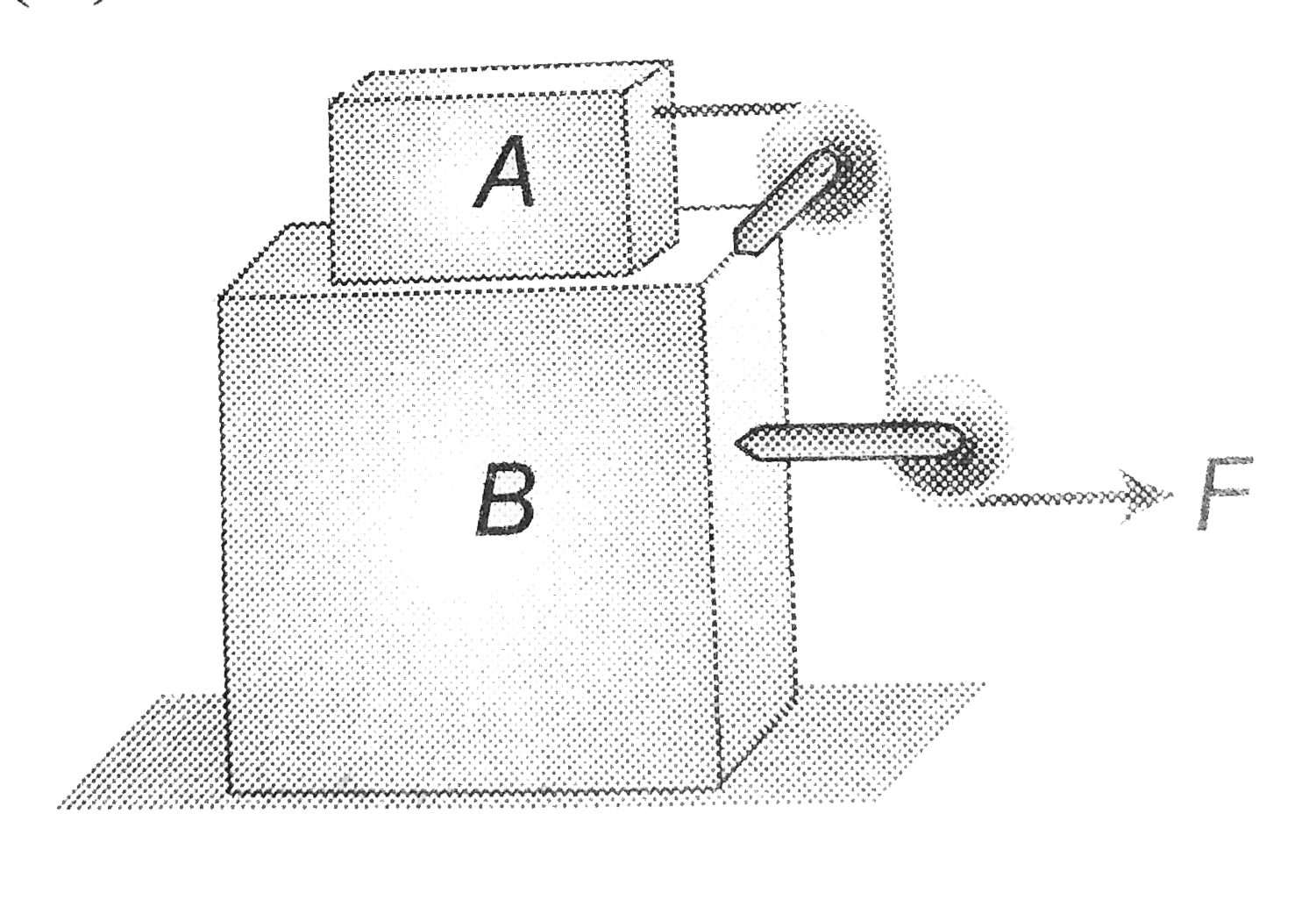 A25NB40NC30ND20N
A25NB40NC30ND20N
A block of mass m is placed on another block of mass M lying on a smooth horizontal surface as shown in the figure. The co-efficient of friction between the blocks is μ. Find the maximum horizontal force F (in Newton) that can be applied to the block M so that the blocks together with same acceleration? (M=3kg,m=2kg,μ=0.1,g=10m/s2)
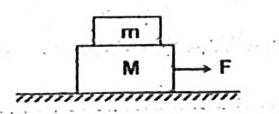 View Solution
View SolutionTwo blocks of mass 2kg and 1kg are at rest on a smooth surface as shown. There is friction between 2kg and 1kg block with μ=0.5. Find maximum force to be applied on 1 kg for the two blocks to move together.
 View Solution
View SolutionTwo blocks A and B of masses mA=1kgandmB=3kg are kept on the table as shown in figure. The coefficient of friction between A and B is 0.2 and between B and the surface of the table is also 0.2. The maximum force F that can be applied on B horizontally, so that the block A does not slide over the block B is ________ (in N): [Take g=10m/s2]
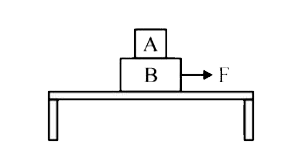 View Solution
View SolutionThe coefficient of static friction between the two blocks shown in figure is μ and the table is smooth. What maximum horizontal forced F can be applied to he block of mass M so that the block move together?
 View Solution
View SolutionThree blocks of masses 5 kg, 3 kg and 2 kg are placed on a rough surface as shown in figure. Coefficient of friction between block and surface is same for all the blocks and is equal to μ=0.2 . A horizontal force of 15 N is applied on 5 kg block. The force exerted by 3 kg block on 2 kg block is : (g = 10 m/s2)
 View Solution
View Solution

